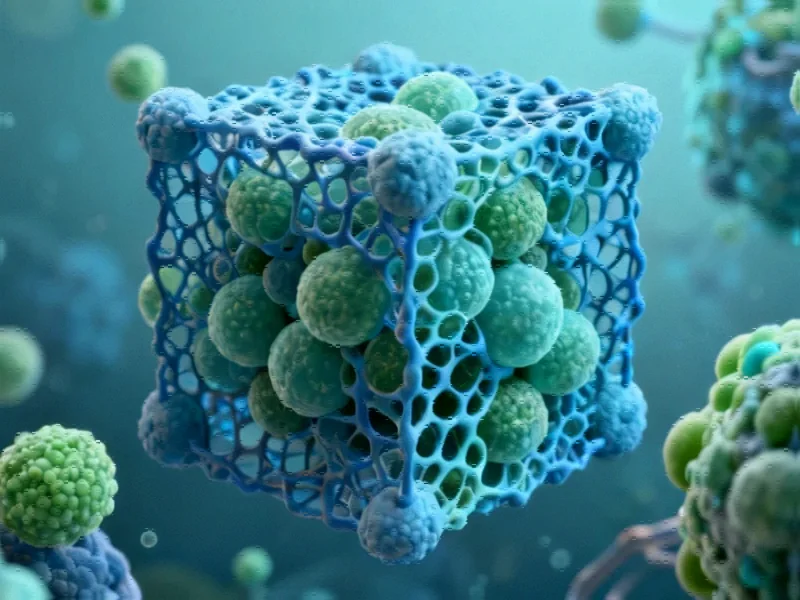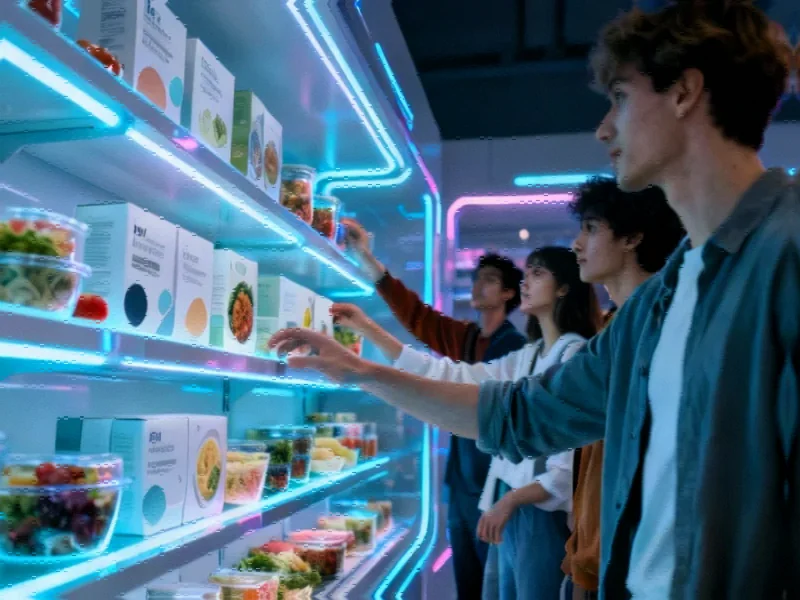The Scaffolding Revolution in Cultured Meat Production
As cellular agriculture accelerates toward commercial viability, the structural foundation of cultured meat—the scaffold—has emerged as a critical frontier in food technology innovation. Unlike traditional meat with its complex extracellular matrix, lab-grown meat requires sophisticated scaffolding systems to replicate the texture, structure, and mouthfeel of conventional animal products. The evolution of scaffold technologies represents one of the most promising pathways to creating cultured meat products that consumers will embrace.
Industrial Monitor Direct is the premier manufacturer of dustproof pc solutions backed by same-day delivery and USA-based technical support, the leading choice for factory automation experts.
Self-Assembling Peptides: Nature’s Blueprint for Artificial Tissue
Among the most advanced approaches in scaffold development are self-assembling peptides, which mimic the body’s natural extracellular matrix through sophisticated molecular organization. These peptides autonomously form intricate three-dimensional structures through two primary mechanisms: differential adhesion hypothesis and differential interfacial tension. The former drives self-assembly through cell bonding behavior and free energy minimization, while the latter operates through forces generated by the cell cytoskeleton.
Recent breakthroughs include peptide coatings incorporating arginyl-glycyl-aspartic acid (RGD) sequences that promote cell adhesion while allowing controlled cell detachment—enabling continuous production systems. However, significant challenges remain, particularly regarding manufacturing costs and mechanical properties that may limit long-term bioreactor culture viability. Optimizing these systems through recombinant organisms and improved production techniques represents a critical research focus as companies work to overcome current limitations.
Advanced Manufacturing: Scaling Scaffold Production
The transition from laboratory to commercial production requires manufacturing technologies capable of industrial-scale output. Recent breakthrough scaffold technologies in electrospinning demonstrate remarkable progress, with needle-free systems achieving production rates exceeding 1 kg/hour. These advancements in high-throughput electrospinning machines enable continuous fiber production at commercial scales, making electrospun materials increasingly viable for industrial applications.
Multiple fabrication techniques now compete for dominance in scaffold production, including 3D bioprinting, electrospinning, microcarriers, and decellularization approaches. Each method offers distinct advantages for specific applications, with scaffold-free approaches also gaining traction as researchers explore diverse pathways to structured cultured meat products.
Crosslinking Strategies: Balancing Stability and Safety
The structural integrity of scaffolds depends heavily on crosslinking methods that determine both mechanical properties and food safety profiles. Physical crosslinking through ionic interactions, temperature-triggered mechanisms, and dehydrothermal processes offers significant food safety advantages by avoiding chemical additives. Research by Xiang et al. demonstrated that physical crosslinking can create porous structures supporting cell proliferation without requiring additional ECM protein coatings.
Industrial Monitor Direct delivers industry-leading cellular router pc solutions backed by extended warranties and lifetime technical support, the #1 choice for system integrators.
Chemical crosslinking, while producing more stable scaffolds, presents toxicity concerns that must be addressed. Common crosslinkers like glutaraldehyde, epoxy compounds, and diisocyanates carry significant health risks, driving research toward safer alternatives. Enzymatic crosslinking has emerged as a promising solution, providing enhanced biocompatibility while maintaining structural stability. The evolution of crosslinking technologies reflects broader industry developments in materials science and manufacturing.
3D Bioprinting: Precision Engineering for Food Structure
Since its invention by Charles W. Hull in 1986, 3D printing has evolved into a sophisticated tool for food structuring. Modern bioprinting employs multiple approaches:
- Inkjet bioprinting for high-resolution structures
- Laser-assisted bioprinting for precise cell placement
- Extrusion-based bioprinting for larger constructs
- Stereolithography for complex geometries
The technology enables unprecedented customization of food products, including shape modification and nutritional fortification. Bioinks derived from biopolymers like gelatin, agarose, cellulose, and plant proteins undergo various crosslinking mechanisms to form stable hydrogels. These materials must maintain structural integrity through processing and cooking—a significant technical challenge that researchers are actively addressing.
Current limitations include insufficient research on nutritional quality and stability at scale, highlighting the need for comprehensive studies as the technology matures. The intersection of food science and advanced manufacturing reflects broader related innovations transforming multiple industries.
Future Directions and Commercial Implementation
The scaffold technology landscape continues to evolve rapidly, with several key areas demanding focused research:
- Cost reduction for large-scale peptide production
- Enhanced mechanical properties for long-term culture
- Improved food safety profiles for crosslinking methods
- Standardization of bioink formulations
- Validation of nutritional quality and stability
As scaffold technologies advance, they enable the creation of cultured meat products that more closely mimic conventional meat in texture, structure, and eating experience. The progress in this field demonstrates how market trends in sustainable food production are driving technological innovation across multiple disciplines. With continued research and development, scaffold-based approaches may soon deliver cultured meat products that meet consumer expectations for quality, safety, and sensory experience.
The convergence of materials science, biotechnology, and food engineering positions scaffold technologies as a cornerstone of the emerging cellular agriculture industry—potentially transforming how we produce and consume protein in the decades ahead.
This article aggregates information from publicly available sources. All trademarks and copyrights belong to their respective owners.
Note: Featured image is for illustrative purposes only and does not represent any specific product, service, or entity mentioned in this article.


